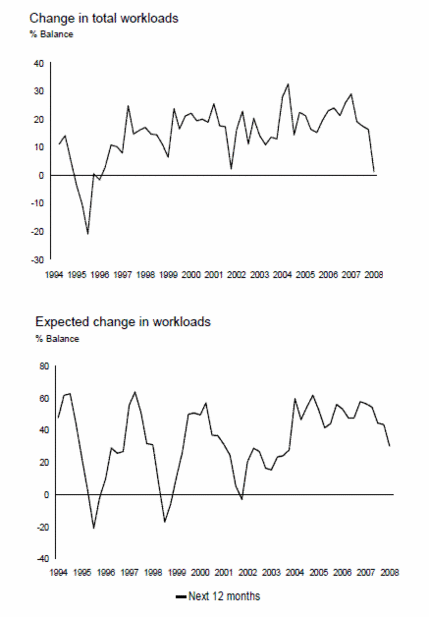Optimism alive and kicking in construction
The RICS construction survey for the third quarter of 2009 found confidence over increased workloads returning to the industry for the first time since 2008 Q1.
This was despite an overall fall in workload across the industry as a whole and the fact that things would have been worse but for a positive showing from publicly financed construction.
So are the surveyors right and we are poised to rebound from recession over the coming year?
Certainly it is encouraging to see optimism alive and kicking in the construction industry. But the seeming disparity between optimism and reality does throw up some issues, which relate to this survey and others of its nature such as that from the buyers’ body CIPS.
It is not uncommon for questions on expectations of workload to overstate the likely future. (Although I suspect if you looked at the surveys of farmers or civil engineering contractors the reverse may be true. I recall in the 1980s the surveys of the then civils body FCEC consistently painting an over gloomy picture of the future.)
But on this point, let’s look at the survey data from RICS in the period up to the start of the construction recession in early 2008. The graphs below are taken from the first quarter 2008 survey.

So what do they tell us?
Firstly, they are not directly comparable. They show the reported change in workload quarter on quarter from 1994 to the end of 2007 and the expectations of workload increases over the coming 12 months.
However, taking that into account, what we see is that the expectations of workload increases for the year ahead during the first quarter of 2008 were wildly optimistic, with a hefty majority expecting workload increases as the industry was poised to fall into one of its deepest recessions ever.
But it must be said that there are points in the graph when there was clearly undue pessimism.
Overall the impression one gets if you compare the graphs is firstly a wilder swing in sentiment than matches the outcomes and that the sense of optimism of the future outstrips the subsequent reality.
Why might this be so?
With these sentiment surveys (and indeed in most surveys) one has to be careful of survivor bias, particularly in a downturn when the better run or luckier firms survive so the figures overstate the upside as the downside is not measured.
Naturally this does not make these surveys worthless, one just has to approach them with caution and take account of the broader context, not least the profile of the respondents.
That said there does seem to be innate optimism within sectors of the business community and indeed an unwillingness to look at the negatives – as was so clearly displayed by Baron Sugar when asked about recession by a BBC journalist.
On this point an observation made by Adam Smith in Wealth of Nations does seem to contain at least one phase for our age, certainly if we consider the behaviour of some bankers.
He wrote: “The over-weening conceit which the greater part of men have in their own abilities is an antient evil remarked by philosophers and moralists of all ages. Their absurd presumptions in their own good fortune, has been less taken notice of. It is, however, if possible, still more universal. There is no man living who, when in tolerable health and spirits, has not some share of it. The chance of gain is by every man more or less over-valued, and the chance of loss is by most men under-valued, and by scarce any man, who is in tolerable health and spirits, valued more than it is worth.”
If this were true in the mid 1700s it appears the more so today.
So it would seem that we need to be at least cautious of optimism.
On this point I was rather taken with a story on the BBC website about grumpiness. (I hasten to point out that the research does not appear to suggest those that are grumpy by nature are smarter, rather it suggests we think differently when we are grumpy than we do when we are happy.)
Further I recognise that this blog is regarded as unreasonably pessimistic, and it is perhaps fairly said that it could easily attract Gillette as a sponsor.
However, despite the gloomy prospects for the industry’s output over the next couple of years there are many other reasons to be optimistic about construction and perhaps I should find more time to plough that furrow.
I have long argued that the industry should pay more attention to the quality of what it can do and the quality of its earnings rather than the volume of work it can do and the quantity of turnover. It will not be the collapse in workloads per se that causes most damage to the industry over this recession it will be the industry’s response to the lack of work and its propensity to suicidal bidding.
And I certainly agree that positive thinking is a must in these tricky times, on that point I am at one with Baron Sugar.
But to kid yourself, or work on the premise that the worst is over with regard to the recession, will ultimately prove disappointing and for some rather crushing.
I had an enlightening chat with my good friend Martin Hewes a couple of days ago. He related how he had woken from a bad dream and felt great relief that the turmoil he was dreaming was not real.
“It’s better than waking up from dreaming you’ve won the lottery to the disappointment of finding that you haven’t,” he said.
Now that is positive thinking.